Orthodoxy | Modesty & Gender | Medieval Mindset | Beauty and Health
Last active 2 hours ago
Don't wanna be here? Send us removal request.
Text
In a Just Civilization, Warmongering on a Bed of Lies Would Earn a Public Execution.

In a just civilization, a man who goes around telling verifiable lies to drag a nation to war, causing men and women to die in a foreign land, natives to be raped and killed, and whole regions to be destabalized would have a public trial and a public execution.
Warmongering is bad enough, but people have their bloodthirsty beliefs. This is a free country, whatever. If you think a Palestinian sneezing in the general direction of a settler's falafal shop is a reason to level Gaza, fine. Repent, but fine. Telling lies, on the other hand, is not fine. Saying that Iran hit "America's embassy in Tel Aviv" when the US embassy is in Jerusalem is a vicious lie begat to pollute American minds and spill American blood.
News media that have been saying Iran is only a year away from making WMDs for close to thirty years (where have we heard that before?) and spreading xanadu-crazy lies about the Iranian government are guilty of the same crimes.
Think about what these lies do. They kill people. Hundreds, thousands, tens of thousands. Bombs fall on babies. Our men pollute their souls by killing foreign children on the basis of nothing but lies.
Yes, these people are murderers. They are rapists. They are baby killers. What is a punishment befitting nationalised blood-thirst? Death made policy? Rape and sodomy a feature of culture? What is the punishment?
By the will of God, cultures of death will burn up in righteous flame.
#christianity#orthodox christianity#orthodoxy#orthodox#eastern orthodoxy#orthodox christian#russian orthodox#greek orthodox#christian blog#catholic#anti war#antiwar#iran#free palestine#palestine#save palestine#i stand with palestine#middle east#america#politics#usa#us military#government#political#anti every war#yes even that war
7 notes
·
View notes
Text
I realized I have no one in the world to bear my soul
I got an ad for a semiglutide injection with the caption "you can just choose to be skinny now" and because of the abuse I suffered as a child and how it was ignored-- ignored because no one wants to protect a fat, ugly child-- I psychologically received that ad as "you could've chosen not to be molested" and went down a spiral.
I went to my fiancé to cry and complain, and he just talked past me and gave me weight loss advice. Then he got mad at me for even involving him with my sorrow.
He asked, "Why do you always dump this on me?" and I realized I have no one else to go to. I used to have friends. I used to trust people. I used to be able to cry to people. But I can't. I have no one anymore. I have loose acquaintances, but no one to whom I am close enough that I could bear this to them.
I am so terrifically lonely, and I can't even go to my fiance about this-- the person I'm going to marry, I can't bring this to him.
I'm just angry at everything and jealous of everyone and full of despair. I just want to talk to someone, but I hate everyone and everyone hates me.
#christianity#orthodoxy#orthodox christian#greek orthodox#christian blog#catholic#russian orthodox#orthodox christianity#orthodox#eastern orthodoxy#vent#personal vent#prayer vent#vent post#prayer request
11 notes
·
View notes
Text
Pain that brings you closer to God is always better than any comfort that keeps you away from Him.
2K notes
·
View notes
Text
Men Used to Die Before They Worried About Getting a Wife
Men in the modern day, post-war, have been sold this terrible lie that not only are they all entitled to a wife, but that they inevitably will fall into having a wife by some kind of happenstance. This is an absolute falsehood.
"Most men in history were married." No, most men in history died before they became men. Male infants die more often than female infants, and male children are more sensitive to disease. Adolescent men and boys cull themselves through risk-taking, ambition, and violence. Boys who survived this slaughter and became men were not only more likely to be married because there was less competition, but also because marriable traits (health, composure, gentleness or aggression, etc.) were positively selected for.
Men in the past had more of a chance at marriage because the ones who never would've gotten any play anyway never even got the chance to be upset about their lack of chances. It's not because the world was more traditional; the world was more dangerous.
Today, thanks to advances in medicine, infants rarely die in the Western and developed world. Praise be to God. It's also hardly socially acceptable to send children out without supervision. Even roughly supervised camping trips where things are likely to go wrong are discouraged. Mothers direct the social lives of their sons, ensuring they don't fall into the wrong crowd and die by gang or interpersonal violence.
These are not bad things. These are good things. I am against infant boys dying of disease, I am against 7th graders dying in horrific accidents, and I am certainly against 20-year-olds dying in war and through gang violence. It's astonishing that I feel I need to offer this disclaimer.
This is just a statistical reality.
A world where boys are not culled is a world where there are more men, and that is a world where men need to come to terms with an unfortunate reality: many of them will never marry.
This does not mean you, gentlemen reader, but you must understand that it could mean you. A wife is not a prize for existing-- they used to be a prize for surviving the disease of infancy, the accidents of puberty, and the danger and warfare of adolescence. When antibiotics and concerned mommies eliminate these factors, not only are unmarriable men left alive to experience this new world, but men who would be otherwise improved by surviving these factors are left unsharpened.
Men who have been saved from the reaping of their sex must work to sharpen themselves in the way they would've been sharpened naturally. This does not mean, as some authors have written, that men need to be chiseled slabs of man-meat (or twink-meat, as those authors seem to prefer), but it does mean they need to hone the core characteristics of survivability: intelligence (or if you can't, then general know-how), strength (any kind; women's preferences are wide and varied), jaw alignment, balance/agility, conflict-resolution of some kind, and disease resistance.
There are, thankfully, few men who have totally lost the genetic lottery. Most men can min/max whatever they've been given. For your study, I'll describe three of the most handsome men I know (still very low behind my fiancé).
The Thin White Duke

He has a well-dressed and lithe body, unstyled yet always lovely blonde hair, high cheekbones, and a great smile. He's charming and disarmingly funny. He's kind and shy, which is a stark contrast to the company he keeps. He's brilliant and organized. He's of English and German descent.
I think I've seen him eat one piece of real food in the whole time I've known him-- the rest of the time, I think he exclusively eats Diet Coke and vanilla cake. Despite this intake as a college student, his jaw belies a childhood of being forced to eat his vegetables. Either that, or he has genetics so good they couldn't be stopped. Both are attractive traits.
He can't throw you across a room or lift rocks into the air, but he is exhausted by nothing. If he put effort in, I bet he'd be a fantastic runner or swimmer. I will try to convince him to take up swordplay, which would be appropriately aristocratic for his personality.
He will manage a woman's life like he manages his own, and his method of conflict resolution is purely intellectual. It would be miles beneath him to throw a punch.
Because of his less-than-stellar nutrition, he is probably low in disease resistance, but none of his physical form shows this. But perhaps down the line, it will. So watch out.
Xerxes

He's Semitic (Yes, I am aware the actual Xerxes of Persia is not Semitic)-- from a Lebanese crime family. He's dark featured with a striking nose, dark and rough eyebrows, and has greasy shoulder-length hair, ran through with waves. He's bearded, because, of course, every "Xerxes" must be. He's got a Mediterranean body type, and by that I mean moderately muscled with some amount of flesh. Of course, you must have flesh if you sit around drinking Arak and eating hummus all day. He has sharp teeth. His height is moderate, as are most of his other features.
What is immoderate about him is his personality and his arresting gaze. His eyes go from narrow and piercing to wide and entrancing in less than a second, and he always looks interested in what you're saying; his face is reactive. He, like The Thin White Duke, is funny and kind. I remember a moment where he pulled me out of a group where I was being talked about disparagingly, and comforted me about it. He does very good impressions and is a fantastic storyteller.
He's ambitious and well-connected. He has an anger problem and is not above coming to blows over a serious matter, especially one involving the women in his life. The only people who should feel totally "safe" around him are women and children. He's very comfortable with his masculinity and thus his femininity.
He's athletic enough to be alright at any sport he'd need to play to impress someone in a business or academic context. His vice is laziness and risk-taking. If he were unlucky or less well-formed, he probably would've been one of the few men to be culled as adolescents.
The Warlord

He's 6'6, but in my brain, he's 7 feet tall. He's built like a refrigerator, or like the side of a mountain, or some Chinese money-wasting statue, or something equally hulking. He's a power lifter and played hockey in high school. He's a Haitian and Dominican Bantu with a Cheshire smile that reminds me of the Totoro spirit from Studio Ghibli. Let's say he's well-marbled or "strong man" in his body composition. He could throw a woman across a room, and given what I know about his romantic life, probably has.
He's a great writer; pedantic, obstinate, contrarian, and creative; and one of the most politically well-informed people I know, both in terms of historical and contemporary politics. He's steady and tolerant, and a refreshingly straight shooter. He, like Xerxes and The Thin White Duke, is hilarious, somehow cracking offensive jokes in a way that makes everyone feel included.
The Warlord is immoderate in all things: in his athleticism, in his diet, in his attitudes, and in his opinions. Admittedly, I don't know his propensity to anger in the least, but I assume it's equally immoderate in the sense that it's like a switch that goes on and off. I'm probably lucky not to be acquainted with it. This Warlord's personal vice is Atheism, which he should get around to fixing, but this is not necessarily a vice of his archetype.

None of these men are the golden sun god or euro-tribesman that exist in the imagination of "Ancestral," or "Primitive," or "Trad" online posters. The Thin White Duke, Xerxes, and The Warlord are not pretending to be something they aren't. They aren't trying to convince the world or, worse, themselves, that they're a living copy of some mythic beast. Whether they know it or not (The Warlord certainly knows), they are embracing their genetic destiny.
A man in his natural environment (anthropologically speaking) will not necessarily look just like one image of a "peak-performance" man in Greek sculpture (none of whom were based on real men-- they were all fantastical idealizations). Rather, he will look like a full expression of his genes, which are influenced by the environment of his ancestors thousands of years ago. There is no reason a Nord should look like an Indian, nor an Ethiopian like a Southern Italian. These genes are not the same-- not built for the same environments or societies-- and none of them should try to rend themselves to fit the genetic code of the other.
#eastern orthodoxy#orthodox christian#orthodoxy#russian orthodox#christian blog#catholic#orthodox christianity#christianity#orthodox#greek orthodox#men#women#orthodox women#dating#gender relations#gender ideology#incel#involuntary celibate#dating in the church#dating culture#marriage#christian marriage
3 notes
·
View notes
Text
Oh Look, Another Piece of Modesty Content Just Dropped.
A video on modesty titled "The Modesty Paradox: How We Know Revealing Clothes Are Wrong" just dropped by YouTuber Brian Holdsworth, and gee, do I have some thoughts.
The frame of the video is the speaker, Holdsworth, standing in a checkout line surrounded by women wearing leggings-- apparently, the extremely tight, ass-hugging variety. I'm imagining the one with the booty strunch thing, idk. He said EVERY part of the women's anatomy was showing and nothing was left to the imagination, so my impression of leggings as thick, middlingly tight athletic garments cannot possibly be what these women were wearing.
Here is what I imagine:

Here is what he must've been imagining:

Now, this could also be an issue of anatomy. The woman in my example is much less curvy than the model in the leggings ad. Unlike what a lot of modesty commentators say, what is immodest or immodest IS different based on the body type you have. Sorry about it. Consider getting over yourself.
But let's put aside the issue of leggings.
Holdsworth said that we can all tell certain things are immodest and immoral to wear because if he (or any other man) commented on the beauty of a legging-clad woman's ass, she would take more offence to that than if a man commented on the beauty of her hair, nails, or sandals.

This is not a coherent argument. Hair is not a living body part and has been reduced to the status of an accessory. Nail polish and shoes are literally accessories, not body parts. There is a difference between complimenting someone's clothing or accessories as opposed to someone's body part. A better example would be the difference in offence a woman would take from a man complimenting her buttocks vs another body part. There's a problem with this because, unless you have some kind of unusual physical form (abnormally high cheekbones is literally the only thing that comes to mind), about the only acceptable body part for a man to compliment a woman on is her eyes. Yes, eyes are not immodest to show.
But I would be greatly offended if a man I didn't know made a comment about how beautiful he finds my lips. I would take it as sexual harassment because that's what it would be. But obviously, lips are not immodest to show. Yet, they are sexual and sexualized.
I am struggling to think of a body part a man could compliment that would not make me feel uncomfortable.

The second reason this is incoherent is that Holdsworth, Bless him, does not know what women know about the psychology of men who make gross comments on our bodies. We know that it doesn't really matter how you're dressed. Street harassment is not about the woman; it's about the man. Further, it's mostly dependent on geography and demographics. In the city I lived in for college, to get to church (one time), I had to walk through a dangerous neighborhood and men just uttered casual rape threats. Was my ankle-length black dress just too much for them? Was I riling them up with my kirtcheif? Was my lily perfume sending them into sexual frenzy? No. No, of course it wasn't anything I did or was doing. They blurted out their thoughts on my wholly unexposed anatomy because a certain kind of man doesn't need to be brought to stumbling; they're already rolling around in the dirt.
Upright men who stumble are, I would guess, not in the habit of shouting "wut dat mouf do" when they're drawn into lust. Even a woman who is wearing revealing and sinfully immodest clothing would not and should not assume it's her clothing getting her that attention. She would rightly assume she'd just encountered a disgusting man.

The stronger element of Holdsworth's video comes near the end where he says that regardless of our intentions ("heart posture" in women's ministry lingo), the clothing we wear affects people in certain ways, and it is our duty as Christians to be cognisant of that and not cause our brothers and sisters to stumble. The issue there is that it's hard to know what causes people to stumble and what doesn't. With things like leggings, it's heavily context dependent, and there are messages from all sides telling women that they're either fine or garments of satan.
The weakest part of his video, weaker than his main argument, is his understanding of what modesty is as a virtue and as a concept. At the end of his video, he praises his wife and daughters for their modesty, and informs his viewers that it's great to dress modestly "because they always get so many compliments when they go out wearing modest dresses!" It's a section of a larger polemic that is about how you can still be beautiful and value your appearance while being modest.
I will say this gently:
It is not modest to go out attracting attention-- attention of any kind. That just isn't what modesty is. Modesty is, and I will say it again, about blending in, fading into the background, and allowing others to see Christ before they see you.
This means, in the fullest sense of it, dressing plainly, conservatively, and kind of boringly-- not like a fashion disaster (as that would also draw attention), but not like a fashion icon either.
By the number of compliments and the kind of compliments ("from charming old men"), I get the impression that his wife and daughters must be wearing what are essentially costumes, as opposed to outfits.
Visiting the grocery store dressed like this:
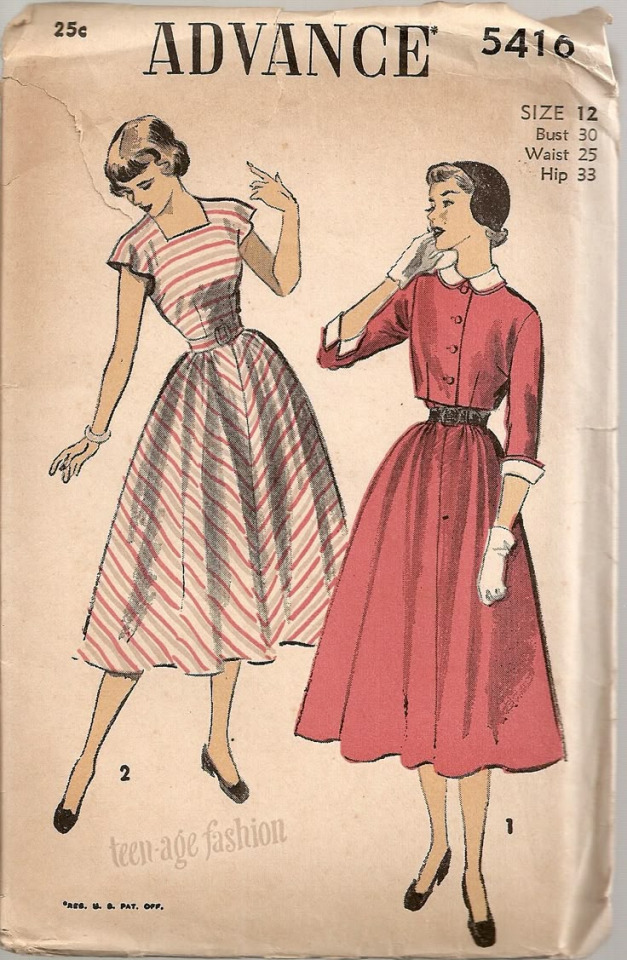
is in no way modest. You may as well be putting on a Snow White costume and serenading the cashier. You MIHGHT AS WELL walk around in Daisy Dukes. You should not do either.
Dressing like this, on the other hand:

will probably not rake in as many compliments, but it is much more modest in an actual sense. Even this would be better:

I hear, dear reader, you saying to me, "Gregoria, but I love fashion! Getting compliments is so nice! I feel better when I'm dressed like a fashion icon!" That is great. I'm not telling you to not do that. I'm not telling you not to dress cute or in a way that makes you happy. I am telling you that it probably isn't the most modest thing to do. Luckily, modesty is not the height of Christian Virtue.
Truly, modesty is not a fruit or gift of the Holy Spirit, it is not a heavenly virtue, and as far as I know, it cracks ZERO virtue clusters in Scripture or in Church teaching. This is not to say it's unimportant, but it is to say there is no need to crane your whole life around what is or is not modest-- I'm already doing that enough for all of us.
#eastern orthodoxy#orthodox christian#greek orthodox#orthodoxy#russian orthodox#christian blog#orthodox christianity#christianity#orthodox#catholic#eastern orthodox christian#orthodox church#eastern orthodox#antiochian orthodoxy#Antiochian orthodox#greek orthodoxy#modest#modesty#modest dress#modest clothing#modest christian#modest culture#modestfashion#modest fashion#modest clothes#catholic femininity#orthodox femininity#christian femininity#conservative#conservatives
7 notes
·
View notes
Text
Explicit Break-Down of Traditional Orthodox Veils vs Undue Muhammadean Imitation
Since I talk about the problem of Muhammadean immitation in Orthodox veiling (mostly on social media through ""Christian""Niqabis""), I figured I'd give a guide on how to tell the difference between a traditional, historical style of veil, in line with Orthodox theology and practice, vs something allegedly Christian women put on because they are immitating people on social media or have profound misunderstandings about the Christian understanding of modesty.

As I have said before and as I will continue to say until I am blue in the face, modesty, as rightly understood by Christian doctrine, isn't about how much skin you're covering. Modesty is about fading into the background, putting others above yourself, and letting people see God in you before they see you yourself. On the first level, wearing an unsual garment that gets you leered at is not and can never be modest. I'm not saying wearing unusual things is inherently, sinfully immodest, but you can tell when someone's fashion (for instance) is just for attention.
On another level, covering your face (and hands) in daily life is Iconoclastic. Iconoclasm is the sin above sins because it is the bud from which all other sins bloom. The face of Christ ought never be covered, and so yours ought never be covered. Unless it is medically or physically necessary, your face should never be covered in daily life, and certainly not at Church. Covering the face for "modesty" or any other reason is not Biblical; there were women who covered their faces in the Bible, but that was for two reasons-- extreme weather and a culture with tragic, pre-incarnation pagan influences. The same is true with the hands. We kiss the hands of icons, we kiss the hands of others. Do not cover them.
BTW, of any Christian/"Christian" historical writing that recommends women cover their faces, I can tell you exactly where it came from and when: it was a late Roman cultural fixation on temple prostitutes and "Vestal Virgins". It is not any more Christian than a Christian man wishing Christian women would be "as modest as muslim women." No.
Furthermore, you will often get an argument about online privacy. Some women will say, "What if they don't want to share their face online?" Well, then don't show your face online. This is such an obvious cope, it's bizzare to me that I have to entertain this. These iconoclast women are not covering their face for online privacy, and you can tell they aren't because they're promoting the niqab activly. If you don't want to show your face online, cover your face with an emoji, with a book (or other object), or with your hand. Be serious.
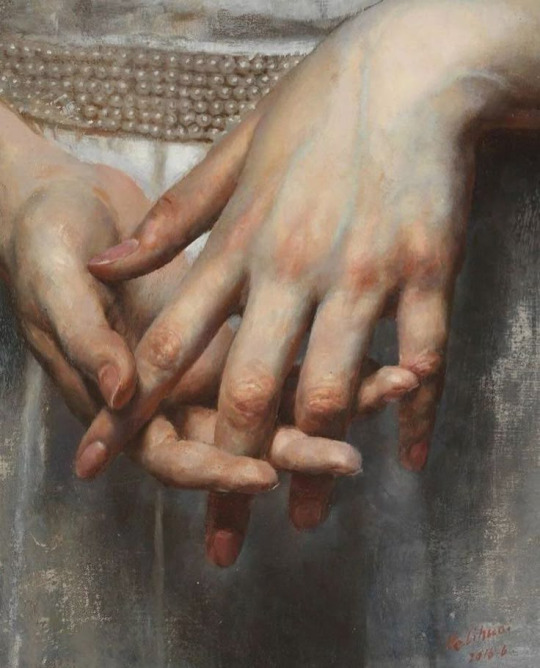
Now, I will say this up front:
1) There is no problem with taking inspiration from Muhammadean women as far as veiling goes. Most Muhammadean women do not veil in any way that is unacceptable for Christians-- the Niqab is a Saudi cultrual export and is not "Islamic" in any sense. Experimenting with veil styles can make you more likely to submit to this commandment and can be just a fun hobby in general!
2) Unless you believe your physical safety will be in danger, you do not need to change the way you veil based on a desire to avoid being mistaken for another religion. If, by the laying of your veil, someone thinks you're Muhammadean, that's their assumption, not yours. But it should not be a goal of yours to be mistaken for these people, and neither should you be delighted about it when you hear someone has mistaken you. Wear your cross explicitly and boldly, but you shouldn't need to pose with an icon for people to know you're Orthodox.
The guide:
Let's take inspiration from Icons and historical images. Here are some acceptable veil styles (paintings, icons, reinactors):



Let's take a look at our Nuns!

Let's see some things all these images have in common:
The fabric of the veil is thick (opaque), not transparent.
The veils are secured; they won't fall off by a single movment or by being hugged by a clumbsy child.
Most of their hair is covered. Sometimes icons have a woman's hair showing, but only a little of it.
Some of them wear under-veils.
The face and hands are never covered, and they are not immitating another religion.
With that, lets look at some irl examples.
Acceptable Veils:






Could some of these veils get these women mistaken for Muhammadeans? Maybe. I could see it happening. But it clearly isn't the intention. They're full enough coverage, and they model what we see in Icons.
Not only do they fit standards of tradition and modesty, they're also easily accessible. All of these are scarves/kirtcheifs that can be used as regular pieces of clothing and can be bought in a regular store.
Some Fundamantally Unacceptable "Veils" (Attention-Seeker Scarves)
Ok, originally, I was going to put some images of these women here, but as I was pasting them in, I realized it's a terrible idea to even display an image of Iconoclasm. It is iconoclasm, and I would never repost an image, even for the sake of an example, of someone painting over Jesus' face. So you'll just have to imagine or be familiar with what I'm talking about.
I also didn't want to give their images any more attention. Starve these women of the attention they're clawing at by defacing themselves.
It is also not lost on me that a lot of the women doing this are not Middle Eastern. Black girls who do this usually are ex-American muhammadeans or have Muhammadean friend groups, but they are a very slim minority in this issue. Most are American or European white girls with an obsession over Arabs. A larger online proportion is this subculture of Russians who, due to the Russian economic relations with the Gulf countries, have a similar but more severe obsession with Arabs.
It also isn't lost on me that esp on this website, modesty is sexually commodified. It is my suspicion that this is a lot of what these women are doing.
Instead, I will talk about some veiling/"veiling" practices I find controversial.
I mean, they're obviously not obstinately sinful, ofc, but they dance on that edge toward imitation and deceit. I'll show you.



Ok, let me break this down:
The top two images are women wearing a garment called a khimar (خمار), which is, to a lesser extent than the niqab, a Saudi cultural import. Now, there is nothing explicitly wrong with this in a church environment (in another environment, it could be extremely immodest because of people's reaction to it). However, especially out and about, you really need to consider why you feel the need to wear a garment that is for a very specific religious end for a religion you are not a part of.
It should also be stated that both of the two women in akhimara now wear niqabs. It seems to be a gateway practice. It is probably not pious to do this.
The final image is a trend I've seen almost exclusively on Pinterest. A major motif of Pinterest as a platform is faceless images. Outfit inspo and other lifestyle content is easier to curate if you can imagine your own face on an outfit. Usually, the whole face is cut off from the image, or a hand or phone is placed in front of it, like my PFP or one of the other images I included. This is probably for both privacy and curation reasons, and there is no problem with it. The final image is different because it doesn't conceal identity or show off the outfit rather than the wearer. On the contrary, it emphasizes the eyes and anyone who knew this woman would immediately be able to identify her.
Instead, it's a digitial imitation of niqab. It isn't something she's wearing around, so I'm not quick to condemn it, but I think it's another one of those slippery slope things.

We Christians must always be vigilant about our interior lives. We must keep our modesty, pride, and vanity in check. We must keep our personal fancies in check.
I care so much about this cultural muhammadification because I am Assyrian. My ancestors have suffered conversion by the sword, conversion by starvation, and conversion by assimilation. There is so much that we've lost to this sinister force, and it breaks my heart to see some of these women who have first been "fully veiled christians" convert to a religion that wants them to disappear.
Veil from icons, veil from history, veil from your friends and matushkas.

#eastern orthodoxy#orthodox christian#orthodoxy#russian orthodox#christian blog#greek orthodox#orthodox christianity#orthodox#christianity#catholic#veil#veiled#veiling#modest#modesty#Christian veil#christian veiling#catholic veil#catholic veiling#orthodox veil#orthodox veiling#modest culture#modest christian#modest dresses#orthodox church#orthodox icon#antiochian orthodoxy#antiochian orthodox#head covering#modest woman
2 notes
·
View notes
Text
Orthodoxy, Modesty, Vanity, and Plastic Surgery
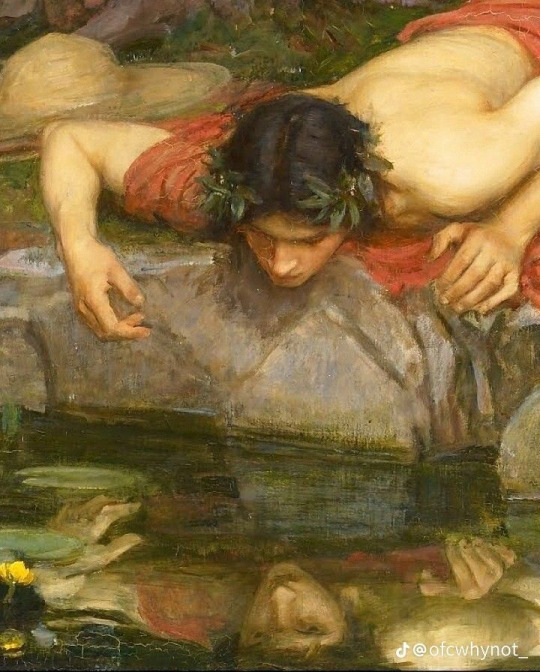
I will open this with some personal reflections. I have a few physical deformities. Many of them are not noticeable, or they are easily covered by or countered with clothing, but they're there nonetheless, and they bother me. I'm multi-racial, and have a nose that is neither faithfully northern European nor faithfully Middle Eastern. If I were exposed to more online influences, I might have more insecurities that I'd want to fix with plastic surgery. Plastic surgery is appealing to me on a base level. I have things about my physical appearance that cause distress, and plastic surgery is right there to change them. It would be painful and expensive, but the insecurities that have loomed over me for as long as I can remember will be gone.
But I know this is wrong. If the first thought in my head is how fantastic plastic surgery would be, the second though is a repromand from the portion of my brain that has been morally well-formed. I know it's wrong, but at the same time, not only do I want it, but we live in a society that says we ought to go under the knife. If it's our "personal choice" then sure, do any old thing you want to your body. Disreguard morals, disreguard why you want it done, just go do it. It's a culture that tells us our shame for these desires is wrong, and in fact, they are in themselves morally suspisious because you are "judging fellow women".
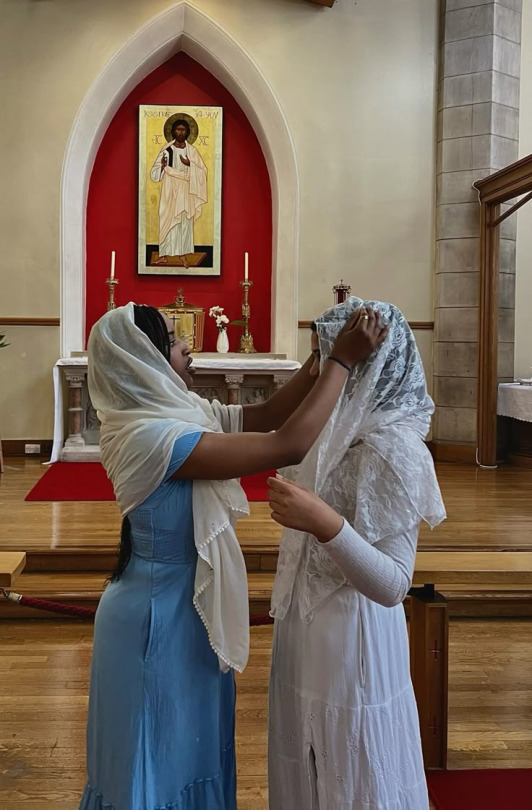
This is just in the secular world. The world of Christianity is even more fraught when you bring this up. In the East and among certain Catholic demographics, plastic surgery and injectables are not just promoted by the media, but they're considered normal and actively expected. In some ways, among certain classes, it's a rite of passage for a woman to get a nose job. In protestant Christianity in certain places in America, it is not unheard of for mothers to gift their daughters boob-jobs as birthday or graduation gifts.

Lip injections are the favorite among Russian women, and nose jobs are the favorite for MENA and Greek girls. Disgraceful. If you're about to tell me this woman hasn't had work done (lip injections and a nose job), you're either a very gullible man or a very propagandized woman.
Even among the Christian communities (most of them) who do not endorse these practices, any strong condemnation of plastic surgery is considered mean and judgmental, like any other strong condemnation of sin. Particularly among protestants, strong condemnation of an immoral and worldly act will be met with arguments like "your salvation does not depend on whether or not you had Juvederm injected into your face!" And you know, that's true. Your salvation is not determined by any of your actions. But it's curious that this is never brought up when talking about uncontroversial sins: "You're telling men to not rape and murder? Sounds like works-based righteousness to me." Absurd. Plastic surgery is a sin; it is immodest, vain, and not Orthodox.

We are absolutely countable for our sins-- in fact, we are infinitely countable for each one of our sins, no matter how small. We are called to righteousness. We are called to love God with all our heart and to love our neighbor as ourselves. Participation in plastic surgery testifies to a belief that the icon of Christ in the human person can and should be changed. Participation in plastic surgery renders you incapable of loving yourself and your fellow person for how they were designed.
Tummy-tuck tycoons and Rhynoplasty-Capos see people --PEOPLE in general, not just their patients who are paying for their services-- as something broken in need of fixing-- not fixing through sanctification and Grace, but through the scalpel, needle, and breast-jellyfish. Man is perfectable-- perfectable through Grace and Christ, not through vanity, immodesty, and money-loving. Human beings (especially women) are degraded by this fixation on artificial beauty. It is not a natural biological marker of health and fertility to have skin that looks like it would ring hollow if you tapped on it, or lips that look like they're about to peel off your face. These fashions are designed to appeal to porn-addicted men, half of whom are homosexuals. Spending thousands of dollars to tickle these creatures is immodest and vain. In some ways, it would be better to walk outside butt-naked, because at least we came into the world naturally nude.
Perhaps it would be different if plastic surgeons fixed disfiguring injuries, helped surgery scars to heal smoothly, or rehabilitated burn victims, but the fact of the industry is just not that. It's money-loving men who prey on women's (often racially based) insecurities, and unlicensed medi-spa women who give their victims staph infections. Add to that the fact that the industry is closely tied to the sex trade, and you have a cocktail of reasons to pull your mind away from the temptation of the idol of injected, plumped, and pumped "beauty".
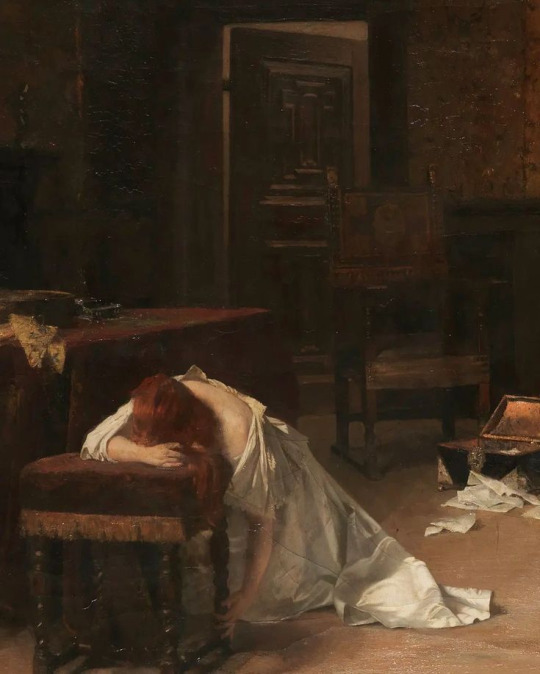
You are made a certain way with intention and meaning, regardless of wether or not you like or understand it. Not only that, you are fearfully and wonderfully made. You are made for dignity, you are made for love, and above all, you are made for holiness. In this world, it can be hard to train ourselves to stand against these desires and to resist them (especially in the more subtle ways they can appear), but it's just work you have to do as a Christian.
Christian women, please stand by one another and affirm the voice of righteousness, humility, and modesty in one another. Women don't naturally want to chop themselves open; that is the voice of the sinful World. Do not just call your friends beautiful, because that is fleeting-- call them faithful, brave, talented, and kind.

#eastern orthodoxy#orthodox christian#greek orthodox#russian orthodox#christian blog#orthodox#orthodox christianity#christianity#orthodoxy#catholic#catholic womanhood#Orthodox womanhood#orthodox woman#orthodox icon#orthodox church#eastern orthodox christian#lord jesus christ#bible#bible believing#works based salvation#by grace through faith#plastic surgery#plastic surgeon#cosmetics#cosmetic surgery#christian values#christian living#christian faith#christian tumblr#christian
14 notes
·
View notes
Text
The Fetishism of the East

It's a well-known thing in the West, of a certain kind of white man who is really into East Asian women. They either exclusively date those women, or they're weird about that preference. They are ostentatiously into one kind of asian culture or another, whether it be anime, the food, history, or religion. In the worst of cases, they're "passport bros" who fly to Indonesia, Thailand, or Japan to participate in sex tourism. Once they get their hands on an East Asian girl, they usually do love her, but they love what she is, not who she is; they like that she's another souvenir, another fashion accessory, another Funko Pop to put on the shelf.
We can all agree that this is extremely weird, but these kinds of men are usually non-religious and participants in other subcultures that require flexible morals, so I never really have to interact with them --aside from that one I accidentally dated who thought Middle Eastern was close enough to Japanese.
However, I do have to interact with another kind of Eastern fetishist: Western men who fetishize Eastern Orthodoxy.

This is a fixation (an obsession?) that otherwise pious, religious (mostly Latin and Protestant) men allow themselves to participate in because, at least on the surface, there isn't that same sexual element that there is with Weebs. They see their fixation as just another part of their spiritual growth. This would be fine if these guys were merely entertaining a personal fancy, or expressing admiration or enjoyment, but at a certain point, it just feels like they want to take the East away from Orthodoxy.
At first, they seem normal enough. They love Byzantine iconography, and gee, who doesn't? They like Orthodox chants, and they listen to Russian choirs. They take up the traditional fasts.
Then, they adorn themselves with Orthodox symbolism and spiritual materials-- the Russian Crucifix, the Greek metals; they carry around the eastern Cross and an Orthodox prayer book. They bought a "blessed oil" (impossible) that smells like incense, and they rub it all over themselves and their personal effects.
When they meet you, an Orthodox person, they grill you about "The Orthodox perspective on" xyz. These days, it's the pope, or maybe liturgical reform if they're feeling adventurous. They talk about how much they prefer Orthodoxy and the East to their own church, but when you ask if they want to convert, they respond with disgust.

Their interest in Orthodoxy, the East, in Byzantium, and so on is just about adding another piece of trim and tackle to their radtrad outfit. Dressing themselves in it makes them look more based to their Western friends. Nevermind the probelms with progressivism, simony, and eccumanism with the Greeks; nevermind the rampant superstision among the Slavs; nevermind the segregated coffee hours with the Antiochians. They make an idol of it all anyways.
I suppose because I can speak Arabic, I run into this a lot and find it most disturbing, but I'm especially peeved with Araboo Orthodox fetishists. Here, sometimes it does become sexually fetishistic-- praising and sexualizing Arab and MENA women while degrading American woman. They enterchangably play chants and nasheeds under their posts, and because they cant speak Arabic, they sometimes use audios that sing the Blasphemies of the Dome of the Rock.
At a certian point, you realize it isn't about appriciation; it's about taking something away and assimilating it into the West. Eventually, they say that the West (meaning Western catholicism or protestantism) was always the true custodian of this or that practice. It's made especially insulting if whatever practice they're talking about isn't actually ancient, but rather, post-schism or even quite new (as in the 1800s). You correct them, and they take it as a personal attack.
They want your opinion until you're critical of problems in their Church or your own, and they're interested in what chants you like until they're not Russian or choral enough, or you like a style of Icon that they don't, or you don't veil like the protestant infulencers they see.
It's disheartening. It's especially disheartening because normally, these men are really nice otherwise.
#eastern orthodoxy#orthodox christian#greek orthodox#russian orthodox#christian blog#orthodoxy#orthodox#orthodox christianity#christianity#catholic#orthodox woman#orthodox women#eastern#eastern orthodox christian#eastern religion#cultural appropriation#cultural christianity#orthodox church#orthodox icon#orthodox chants#russian chants#greek chants#arabic chants#arab chants#christian#christian woman#christian women#faithful femininity#biblical womanhood#biblical femininity
4 notes
·
View notes
Text
I also really want to affirm you that in Church, veiling is never a sin. In fact, in Orthodoxy, it is, indeed, required, regurardless of how many people may think it isn't. The Church is filled with people with holy intentions, but impious practices. For example, in the Greek church, there is a tendency for people to recieve the Eucharist only annually and to fly to confession with extreme infrequency, and no one does this because they're intentionally going against the Church-- ofc not. They do it because they think it is pious. In their mind, they are treating the sacriments with special seriousness.
We are all on a journey to discover what is right, but please, please do not let someone else's journey sway you from what you know is the right path. We are drawn to veil because we must!
The "Mantilla" is not Reverent, not Traditional, and not Catholic. It isn't Even a Veil.
The mantilla, a lacy, sometimes sparkly, transparent, half-circle or triangle-shaped garment, is often lauded as a traditional, reverent, catholic piece of church clothing, but it is none of the above. The mantilla is the long-lived fashion of the secular Spanish aristocracy, and until recently, was exclusive to those regions under Spanish influence and colonialism (absoloutly not universal or catholic). They were worn by women who didn't want to cover their pretty Catalan locks-- as good a reason as any to manipulate the traditions of the Church.
For a time, mantillas were even banned in the New World, and women wearing them would be denied communion. Why? Because the mantilla is not a veil. It's transparent-- in no way does it cover a woman's hair in the way Saint Paul described in Corinthians. He writes, "every woman who prays or prophesies with her head uncovered dishonors her head, for that is one and the same as if her head were shaved. For if a woman is not covered, let her also be shorn. But if it is shameful for a woman to be shorn or shaved, let her be covered." Women's heads and hair should be covered-- not adorned with glittering table coasters.

Fully ridiculous. Look me straight in the eyeballs and tell me this is what St. Paul had in mind when he told women to cover their heads. Be serious.
Though in Christianity, women do not veil out of any kind of modesty (or 'modesty'), the mantilla is immodest as it makes the practice of veiling into a fashion statement, which is what the mantilla always was since its very invention. It is not merely fashion (picking out a veil in a color that matches your outfit), but fashion meant to skirt the actual requirements of the church-- that is, a real, opaque veil that resembles something the historical church would've worn from the days of Pentecost to any time before the so-called Enlightenment. It would be better to wear no head covering of any kind or to simply braid your hair, than to engage in a practice of obstinate adornment. This is not my opinion as an Orthodox Christian (where proper veiling is more common but still not universal)-- it is the opinion of the historical Christian Church until about five seconds ago.
There is debate among Christians who study this teaching about whether Paul's words imply that the entirety of the hair (with the possible exception of bangs) should be covered, or if he means more specifically the head itself (allowing the length of the hair to hang out of the back of a veil). I do not feel strongly either way (in a theological sense) so long as the material is opaque and actually covers at least the area of the skull. That is the bare minimum of what Saint Paul writes.
Here are some examples of proper veils in a church environment:
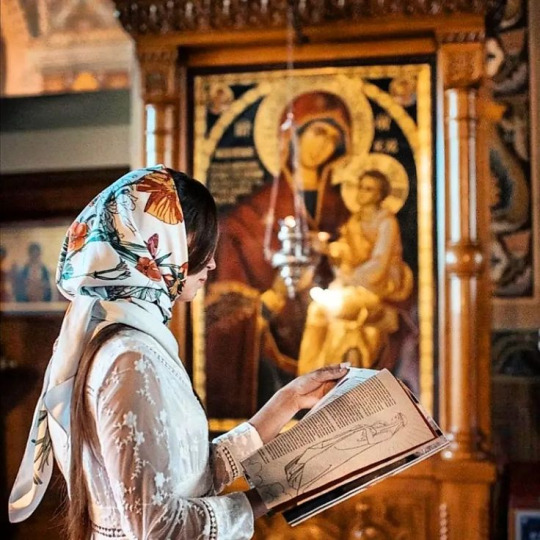
I find this very pretty, but all I can think about is the satin slipping for all of the Divine Liturgy. I always have to clip and pin and have it tightly fastened before the curve of my skull.

Probably do not bring the sheep into the Church building.

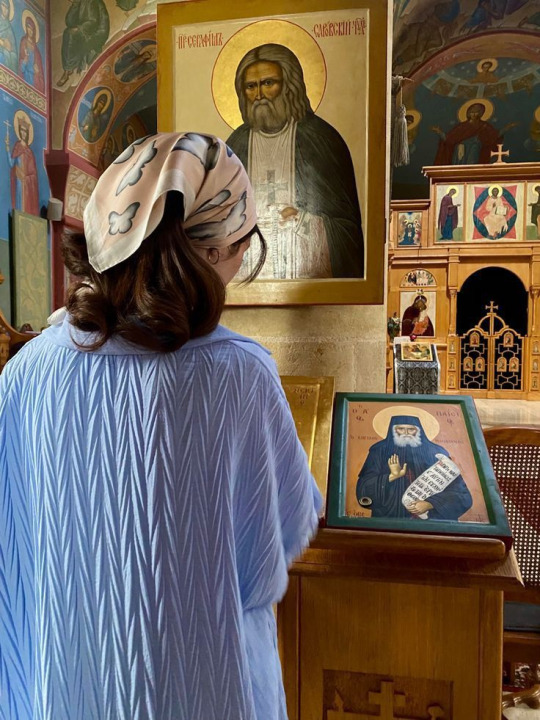



The infatuation with mantillas in the non-Spanish/Latin world began, as far as I can surmise, piecemeal in the late 1800s, picking up to an almost universal practice after Vatican II. This is to say, now, when Roman Catholic women veil, they almost always wear a mantilla. Before the 60s, European and white American RC women mostly wore hats as their form of head covering, which are their own issue, mostly related to fashion and insufficient coverage. Is a "pillbox hat" really a head covering Saint Paul would find acceptable? But at least they're opaque, right? Well, I should pick my battles.

I believe the reason the mantilla is particularly popular among young Roman Catholic women is due to the way RC influencers and 'gurus' talk about the purpose of veiling.
The actual purpose of veiling is to submit to the commands of God as recorded by Saint Paul. This following of a commandment allows you to be properly reverent and to be in communion with the historical practices of the church, past, present, and future. It's a simple reason, not very wild, controversial, or entertaining. That's the problem for RC lady influencers-- there are only so many ways you can quote the letters to the Corinthians.
So, these women feel the need to make up other reasons to veil, all of which range from tangential, to irrelevant, to heretical. Here are some doozies:
To Imitate Mary
Now, we do many things to imitate Mary-- notably, repeating her Magnificat. But Mary did not invent veiling. Veiling is a near-universal cultural practice, performed for many reasons. Of course, Mary rightfully and righteously participated in the veiling of Christianity, but she is not the reason why we veil (or ought to).

Notice how she covers herself?
2. To 'Express your Femininity'
Kill me now. Ok, it is fine and good if veiling makes you feel feminine or gets you more in touch with your femininity. That is a blessing. I know I never feel more beautiful than when I'm veiling, but this is not a reason we veil! Veiling is not about our internal feelings; it's about following a commandment.

Ohh yeah this is definitely Apostolic.
3. For Modesty
We've been over this one. Stop confusing Christianity with Muhammad's movement. Seriously, can we find a middle ground between imitating degenerate secular aristocracy and the false prophet's wives? At this point, I'm begging you.

4. To Show the Beauty of the Church
I am so sorry for you if you do not see the genuine beauty in the proper, traditional veiling of the Church. I don't know what else to tell you than that there is no tradition of the church that exists merely for your aesthetic entertainment. No statue carved nor icon writ, no paint spilled nor incense burned, no note sung, no vestment sewn has ever, ever been done merely because it is pretty. I understand the inclination to aesthetically prefer glittering lace that may dance in chapel light over a flat Pashmina or Pavlovsky Posad. However, I find it mind-boggling that this would seem a sufficient reason to abandon what the Scriptures actually demand. This is just as ridiculous as it would be to apostatize to Hinduism because you find their temples more visually appealing. You know what else is very sparkly and pretty? The Imam Ali Shrine in Iraq. Dazzling. But that does not make it part of the Christian Church. You must have the willpower and discernment to place what the Church demands above your personal fancies.
Women are so confused about veiling and the reasons why we must do it, is because veiling is no longer "simply what we do," as it has been both culturally and religiously until very recently. It is now, among RCs, an issue of controversy, somehow requiring justifications and auxiliary reasonings. It is not enough that Scripture demands it, the Church teaches it, and Her saints keep it-- there must be all these other reasons. This degradation of the veil began with things like the mantilla in Spain, the mesh bonnet and literal doyllie in Northern France and England, and other global innovations upon and rejections of the veil. We, as a Church, do not go from the wimple, to the mantilla, to a naked head over a few extremely progressive evenings. It was incremental, and participation in the mantilla only pushes us farther down the path of innovation.

If beauty is a real concern of yours, and no judgment if it is --the woman's heart years for beauty in a special and important way-- I think you'll find that the traditional veil allows just as much beauty and personal touch as the mantilla, if not much much more. Experimenting with veil styles is a small hobby of mine, and I feel accomplished when I can get the fabric to lay just right. My personal favorite is what I call the "cat ear" style, where there are two little peaks of fabric on the top of the head. Adorable.
Free yourself from mantilla mind slavery.
86 notes
·
View notes
Text
Ok, this is something I have posted about before and covered here. Christians do not cover our hair out of "modesty"-- either actual modesty or a bizarre Muhammadan-influenced misconception of modesty. I will say this definitively and I will say this strongly, no Church Father has ever rightly recommended that women cover our faces because covering your face is iconoclastic. There is just no way around it; it is literally defacing. The Theotokos did not cover her face, and the only reason St Clement of Alexandria and Tertullian (who is not a saint, btw) wrote in praise of it was because they were excessively enamored with the Vestal "Virgins". Do not cover your face outside of environmental or medical necessity.
What I will say about "full-time" veiling is that it should not be a practice that
1) (most importantly) puts you in any danger (either from your neighbors, parents, peers, etc. (I no longer veil outside of church (even a block away) in my hometown because I was nearly assaulted for it))
2) something that gets you a lot of attention, or
3) gets you mistaken for another religion.
None of these things are pious, and getting yourself a lot of attention is explicitly immodest.
I love veiling as a practice, and it has been a battle both to not make a spectacle of myself by veiling and to maintain the practice in a way I find meaningful. In my hometown context, headcoverings of any kind are radically uncommon and are mostly associated with being the assimilated wife or girlfriend of a criminal. But where I go to college, it's a big city and anything goes, so on the way to church or when I'm traveling, I can veil how I want, especially in the winter! In the summer, I wear a kerchief (a historic form of head covering across the world and history) or I braid my hair back so it is 'veiled' in a different way.
The mantilla, in the best case, is not modest or immodest. It just isn't covering your head. We cover our heads for theological reasons, not for reasons of modesty. I mention that the mantilla can be immodest because it's about attention, not about what is covered. imo, anything involving copious amounts of lace and glitter is not a modest option for church, especially when these veils become a status symbol within the Church. Orthodoxy runs into the problem of veils dipping into immodesty because of designer labels-- at least in the Russian Church. Wearing a veil with "GUCCI" or "HERMES" splattered across it, advertising "I spent a gazillion dollars on this square of fabric" is not what I would call modest.
The "Mantilla" is not Reverent, not Traditional, and not Catholic. It isn't Even a Veil.
The mantilla, a lacy, sometimes sparkly, transparent, half-circle or triangle-shaped garment, is often lauded as a traditional, reverent, catholic piece of church clothing, but it is none of the above. The mantilla is the long-lived fashion of the secular Spanish aristocracy, and until recently, was exclusive to those regions under Spanish influence and colonialism (absoloutly not universal or catholic). They were worn by women who didn't want to cover their pretty Catalan locks-- as good a reason as any to manipulate the traditions of the Church.
For a time, mantillas were even banned in the New World, and women wearing them would be denied communion. Why? Because the mantilla is not a veil. It's transparent-- in no way does it cover a woman's hair in the way Saint Paul described in Corinthians. He writes, "every woman who prays or prophesies with her head uncovered dishonors her head, for that is one and the same as if her head were shaved. For if a woman is not covered, let her also be shorn. But if it is shameful for a woman to be shorn or shaved, let her be covered." Women's heads and hair should be covered-- not adorned with glittering table coasters.

Fully ridiculous. Look me straight in the eyeballs and tell me this is what St. Paul had in mind when he told women to cover their heads. Be serious.
Though in Christianity, women do not veil out of any kind of modesty (or 'modesty'), the mantilla is immodest as it makes the practice of veiling into a fashion statement, which is what the mantilla always was since its very invention. It is not merely fashion (picking out a veil in a color that matches your outfit), but fashion meant to skirt the actual requirements of the church-- that is, a real, opaque veil that resembles something the historical church would've worn from the days of Pentecost to any time before the so-called Enlightenment. It would be better to wear no head covering of any kind or to simply braid your hair, than to engage in a practice of obstinate adornment. This is not my opinion as an Orthodox Christian (where proper veiling is more common but still not universal)-- it is the opinion of the historical Christian Church until about five seconds ago.
There is debate among Christians who study this teaching about whether Paul's words imply that the entirety of the hair (with the possible exception of bangs) should be covered, or if he means more specifically the head itself (allowing the length of the hair to hang out of the back of a veil). I do not feel strongly either way (in a theological sense) so long as the material is opaque and actually covers at least the area of the skull. That is the bare minimum of what Saint Paul writes.
Here are some examples of proper veils in a church environment:

I find this very pretty, but all I can think about is the satin slipping for all of the Divine Liturgy. I always have to clip and pin and have it tightly fastened before the curve of my skull.

Probably do not bring the sheep into the Church building.





The infatuation with mantillas in the non-Spanish/Latin world began, as far as I can surmise, piecemeal in the late 1800s, picking up to an almost universal practice after Vatican II. This is to say, now, when Roman Catholic women veil, they almost always wear a mantilla. Before the 60s, European and white American RC women mostly wore hats as their form of head covering, which are their own issue, mostly related to fashion and insufficient coverage. Is a "pillbox hat" really a head covering Saint Paul would find acceptable? But at least they're opaque, right? Well, I should pick my battles.

I believe the reason the mantilla is particularly popular among young Roman Catholic women is due to the way RC influencers and 'gurus' talk about the purpose of veiling.
The actual purpose of veiling is to submit to the commands of God as recorded by Saint Paul. This following of a commandment allows you to be properly reverent and to be in communion with the historical practices of the church, past, present, and future. It's a simple reason, not very wild, controversial, or entertaining. That's the problem for RC lady influencers-- there are only so many ways you can quote the letters to the Corinthians.
So, these women feel the need to make up other reasons to veil, all of which range from tangential, to irrelevant, to heretical. Here are some doozies:
To Imitate Mary
Now, we do many things to imitate Mary-- notably, repeating her Magnificat. But Mary did not invent veiling. Veiling is a near-universal cultural practice, performed for many reasons. Of course, Mary rightfully and righteously participated in the veiling of Christianity, but she is not the reason why we veil (or ought to).

Notice how she covers herself?
2. To 'Express your Femininity'
Kill me now. Ok, it is fine and good if veiling makes you feel feminine or gets you more in touch with your femininity. That is a blessing. I know I never feel more beautiful than when I'm veiling, but this is not a reason we veil! Veiling is not about our internal feelings; it's about following a commandment.

Ohh yeah this is definitely Apostolic.
3. For Modesty
We've been over this one. Stop confusing Christianity with Muhammad's movement. Seriously, can we find a middle ground between imitating degenerate secular aristocracy and the false prophet's wives? At this point, I'm begging you.

4. To Show the Beauty of the Church
I am so sorry for you if you do not see the genuine beauty in the proper, traditional veiling of the Church. I don't know what else to tell you than that there is no tradition of the church that exists merely for your aesthetic entertainment. No statue carved nor icon writ, no paint spilled nor incense burned, no note sung, no vestment sewn has ever, ever been done merely because it is pretty. I understand the inclination to aesthetically prefer glittering lace that may dance in chapel light over a flat Pashmina or Pavlovsky Posad. However, I find it mind-boggling that this would seem a sufficient reason to abandon what the Scriptures actually demand. This is just as ridiculous as it would be to apostatize to Hinduism because you find their temples more visually appealing. You know what else is very sparkly and pretty? The Imam Ali Shrine in Iraq. Dazzling. But that does not make it part of the Christian Church. You must have the willpower and discernment to place what the Church demands above your personal fancies.
Women are so confused about veiling and the reasons why we must do it, is because veiling is no longer "simply what we do," as it has been both culturally and religiously until very recently. It is now, among RCs, an issue of controversy, somehow requiring justifications and auxiliary reasonings. It is not enough that Scripture demands it, the Church teaches it, and Her saints keep it-- there must be all these other reasons. This degradation of the veil began with things like the mantilla in Spain, the mesh bonnet and literal doyllie in Northern France and England, and other global innovations upon and rejections of the veil. We, as a Church, do not go from the wimple, to the mantilla, to a naked head over a few extremely progressive evenings. It was incremental, and participation in the mantilla only pushes us farther down the path of innovation.

If beauty is a real concern of yours, and no judgment if it is --the woman's heart years for beauty in a special and important way-- I think you'll find that the traditional veil allows just as much beauty and personal touch as the mantilla, if not much much more. Experimenting with veil styles is a small hobby of mine, and I feel accomplished when I can get the fabric to lay just right. My personal favorite is what I call the "cat ear" style, where there are two little peaks of fabric on the top of the head. Adorable.
Free yourself from mantilla mind slavery.
86 notes
·
View notes
Text
Modesty and Undergarments

I recently saw an Instagram post that was titled something along the lines of "Crunchy things I gave up when I became a Christian." Some of these things were new-age practices and had nothing to do with holistic health or anything I would call "crunchy". But one of the things she mentioned was that she gave up NOT wearing a bra.
There is really not a way around it-- bras damage your health. They put pressure on your diaphragm, they weaken elasticity, and do a whole host of other things if they're fitted improperly! If you are blessed in the bosom department and you think they give you support, that may be true, but they are still weakening elasticity and they are still harming your health, even if you find them helpful and have weighed those risks. There is no reason a woman below a DD should need to wear a bra "for health and comfort reasons" outside of physical activity (which, even then, still weakens elasticity).
Her message was that not wearing a bra is immodest. Okay, I can see that this is true if you're wearing something see-through. I can see that this is true if you're wearing something particularly tight or thin. But, subjecting yourself to things that harm your health is not modest and never will be. Indeed, dressing in a turtleneck in 90-degree weather, knowing it puts you at risk of fainting, is IMMODEST. It's attention-seeking and piety-signalling. Put on a tee-shirt.

Rant aside, we have to ask ourselves: if this piece of clothing is immodest without a bra, is it modest at all? A see-through blouse that would expose your nipples if you didn't wear a bra is not really modest with a bra, just like how a skirt you can't wear without safty-shorts isn't really modest either. Those pants you can't wear without a change in underwear too... are those really modest? No.
Bras (and most all other undergarments through history) were not for modesty, nor for protection (as in the shift or chemise), but rather, to create a fashionable and sexually desirable shilloute (as in layers of pettycoats, bumrolls, tight-lace corsets and stays, crinolines, bustles, breastpads, and so on). Mary Phelps Jacob, the inventor of our modern bra, did not take on such an act for modesty or even comfort but for fashion (specifically to cover the boning of her corset, which was visible through her translucent dress). Later iterations of the bra would include the bullet bra, the push-up bra, the wonder-bra, and the water-bra, none of which sound "modest" to me in any sense. But to be fair, there's also the "minimizer bra" which is even worse for a woman's health (like wearing a compressive sports bra the whole day) and STILL conforms to fashion trends and changes your natural body.

Contemporary bras exist to give women's breasts a rounded, "perky" (ironic), full, lifted, etc. look. This look is designed to appeal, if not to men, and to women who have been unduly influenced by them, then to fashion designers, homosexual men, and pornographers.
Through most of history and certainly in the time of the apostles, women did not wear bras-- the most they wore was a 'bandau'-like garment for sports or hard, hard labor, which is our equivalent of a bralette (which are frequently available in natural materials!). Depending on the region, time of year, a woman's immediate position, and so on, the outline of her breasts and nipples may or may not have been visible. If this, in your or your culture's opinion, is immodest, you should cover this outline with heavier fabric, more layers, and less obvious colors, but know this: for most of history and in most parts of the world, the mere outline and physics of women's breasts were not and are not considered "immodest". If you are conducting yourself in a modest fashion, not swinging your breasts around and wagging your nipples in men's faces, you should be fine.
#modesty#modest#christian modesty#modest christian#all natural#modest fashion#modesty culture#modest culture#christianity#orthodox christianity#orthodox#orthodoxy#eastern orthodoxy#orthodox christian#greek orthodox#russian orthodox#christian blog#catholic
3 notes
·
View notes
Text

Akathist to the Theotokos - Softener of Evil Hearts (Prayers for Enemies and against Sorrow)
Apolytikion
Soften our evil hearts, O Theotokos, and quench the attacks of those who hate us and loose all straitness of our soul. For looking on thy holy icon we are filled with compunction by thy suffering and loving-kindness for us, and we kiss thy wounds; we are filled with horror for the darts with which we wound thee. Let us not, O Mother of Compassion, according to the cruelty of our hearts, perish from the cruelty of heart of those near us, for thou art in truth the Softener of Evil Hearts.
Kontakion I
We cry out with heartfelt emotion to the chosen Virgin Mary, far nobler than all the daughters of the earth, Mother of the Son of God, who gave Salvation to the world: Look at our life, which is filled with every sorrow, and remember the sorrow and pain which thou didst suffer as one born on earth with us, and do with us according to thy merciful heart, that we may cry unto thee: Rejoice, much-sorrowing Mother of God, turn our sorrows into joy and soften the hearts of evil men!
Ikos I
An angel announced the birth of the Saviour of the world to the shepherds in Bethlehem and with the multitude of the heavenly hosts praised God, singing: “Glory to God in the highest and on earth peace, good will among men!” But thou, O Mother of God, having nowhere to lay thine head, since there was no room in the inn, gave birth to thy first-born Son in a cave and, wrapping Him in swaddling clothes, laid Him in a manger. Knowing the pain in thy heart, we cry out to thee:
Rejoice, for thou wast warmed by the breath of thine own beloved Son! Rejoice, for thou didst wrap the eternal Child in swaddling clothes! Rejoice, for thou didst nourish with thy milk the One who sustaineth the universe! Rejoice, for thou didst turn a cave into a heaven! Rejoice, for thou didst make thy throne upon the Cherubim! Rejoice, for thou didst remain a virgin both in giving birth and after birth! Rejoice, much-sorrowing Mother of God, turn our sorrows into joy and soften the hearts of evil men!
Kontakion II
Seeing the Eternal Child swaddled and lying in a manger, the shepherds of Bethlehem came to worship Him and to relay that which the Angels told them about the Child. But Mary kept all these things in her heart. And after eight days had passed, Jesus was circumcised, according to the law of Israel, as a man. Hymning thy humility and patience, O Theotokos, we sing to the Good God Eternal: Alleluia!
Ikos II
Having their understanding based on God and keeping the Law of the Lord, on the fortieth day when the days of purification were complete, Jesus' parents took Him to Jerusalem so that they could present Him before the Lord and offer sacrifice for Him, according to the decree in the Law of the Lord. But we sing out to thee, O Theotokos, thus:
Rejoice, for thou didst take the Creator of the universe to the Temple in Jerusalem to fulfill the Law! Rejoice, for thou didst there meet the Elder Simeon with joy! Rejoice, thou only Pure and blessed one among women! Rejoice, for with humility Thou didst carry thy cross adorned with sorrows! Rejoice, for thou didst never disobey the will of God! Rejoice, for thou didst reveal thyself as a model of patience and humility! Rejoice, much-sorrowing Mother of God, turn our sorrows into joy and soften the hearts of evil men!
Kontakion III
Thou wast strengthened with power from on high, O Mother of God, when thou didst hear the words of the Elder Simeon, when he said to thee: “Behold, this Child is destined to be the rise and fall of many in Israel. This is a sign which will be spoken against, and a sword will pierce thy very soul so that the thoughts of many may be revealed.” And great sorrow entered the heart of the Theotokos, and with grief she cried out to God: Alleluia!
Ikos III
Hastening to destroy the Child, Herod ordered the killing of all children in Bethlehem and its environs from two years of age and under, according to the time that he determined from the Magi. And behold, according to the command of God, the Elder Joseph was informed by an angel in a dream to flee with the Holy Family to Egypt and to remain there until the death of Herod. Therefore with compunction, we cry out to thee, O Theotokos:
Rejoice for thou didst bear the entire turmoil of exile! Rejoice for all the idols fell in the land of Egypt not being able to endure the power of thy Son! Rejoice for thou didst remain for seven years among the dishonorable pagans! Rejoice, for thou didst arrive in Nazareth with thy first-born Youth and with thy betrothed! Rejoice, for thou didst live with the Elder Joseph the carpenter in poverty! Rejoice, for thou didst spend all thy time in hard labors! Rejoice, much-sorrowing Mother of God, turn our sorrows into joy and soften the hearts of evil men!
Kontakion IV
A storm of sorrows whirled about the most pure Mother when they returned from Jerusalem, not finding the young man Jesus in the caravan. For this reason they returned to look for Him, and after three days they found Him in the Temple, sitting among the teachers listening to them and asking them questions. And His Mother asked Him: “Child, why hast Thou done this to us? Behold, Thy father and I suffered greatly looking for Thee.” And Jesus answered them: ” Why were ye looking for Me? Do ye not know about those things which My Father has entrusted unto Me?” And Thou, O Most Pure One, kept all these sayings in Thy heart, crying out to God: Alleluia!
Ikos IV
The Mother of God heard that Jesus traveled through all of Galilee, teaching in their synagogues, preaching the Gospel of the Kingdom and healing all kinds of illness and infirmity among the people. And His reputation spread through all of Syria and they brought Him every kind of illness and the suffering and those tormented by demons and the paralyzed and He healed them. But thou, O Mother of God, knowing the prophecy, sorrowed in thy heart, knowing that very soon the time would come when Thy Son would present Himself as a sacrifice for the sins of the world. For this reason we bless thee, much-sorrowing Mother of God, crying out:
Rejoice, for thou didst give thy Son to the service of the Jewish people! Rejoice, for thou didst sorrow in thy heart but didst submit to the will of God! Rejoice, for thou didst save the world from the deluge of sin! Rejoice for thou didst crush the head of the ancient serpent! Rejoice, for thou didst offer thyself as a living sacrifice to God! Rejoice, O blessed one, the Lord is with Thee! Rejoice, much-sorrowing Mother of God, turn our sorrows into joy and soften the hearts of evil men!
Kontakion V
Preaching the Kingdom of God on earth, Jesus exposed the arrogance of the Pharisees, who imagined themselves to be righteous. So when they heard His parables, they understood it was about them that He was speaking, and they sought to arrest Him, but they feared the people who considered Him to be a prophet. Seeing all of this, the Mother of God sorrowed for her beloved Son and feared that they would kill Him, in affliction crying out: Alleluia!
Ikos V
Some of the Jews, seeing the resurrection of Lazarus, went to the Pharisees and told them what Jesus had done. And Caiaphas, who was the high priest that year, said: “It will be better for us that one man die for the people, so that the whole nation would not perish.” From that day on they took counsel about how they would kill Him. But we cry out to thee, O Most Pure One:
Rejoice, thou who gavest birth to the Saviour of the world! Rejoice, source of our salvation! Rejoice, for thou wast chosen from birth to be the Mother of our Saviour! Rejoice, Mother of God, destined for suffering! Rejoice, O blessed one, who dost preside as Queen of Heaven! Rejoice, O blessed one, who always prays for us! Rejoice, much-sorrowing Mother of God, turn our sorrows into joy and soften the hearts of evil men!
Kontakion VI
Once a preacher of the Word of God and now a traitor, Judas Iscariot, one of the twelve apostles, went to the high priest to betray his Teacher. They listened to him, were exceedingly pleased, and promised to give him thirty pieces of silver. But thou, O Mother of God, didst sorrow for thy beloved Son, and didst cry out in grief to God: Alleluia!
Ikos VI
Taking part in the Last Supper with the disciples, at which the Teacher washed their feet, thereby revealing an example of humility, Christ said to them: “One of you will betray Me.” But we, suffering with the Mother of God, cry out to Her:
Rejoice, Mother of God, languishing with the torture of thy heart! Rejoice, Thou who didst suffer all in this most sorrowful vale! Rejoice, Thou who didst find comfort in prayer! Rejoice, joy of all who sorrow! Rejoice, Thou who dost save us from the mire of sin! Rejoice, vessel filled with the grace of the Holy Spirit! Rejoice, much-sorrowing Mother of God, turn our sorrows into joy and soften the hearts of evil men!
Kontakion VII
Desiring to show His love for the human race, the Lord Jesus Christ at the Mystical Supper blessed and broke bread and gave it to His disciples and apostles, saying: “Take, eat, this is My Body.” And taking the chalice and giving praise gave it to them said: “All of you drink of this, this is My Blood of the New Covenant which is shed for many for the remission of sins.” Thanking the compassionate God for His ineffable mercy to us, we sing to Him: Alleluia!
Ikos VII
The Lord revealed a new sign of His mercy to His disciples when He promised to send them the Comforter, the Spirit of Truth, Who would descend from the Father and would witness concerning Him. But to thee, O Mother of God, sanctified again on the day of Pentecost by the Holy Spirit, we cry:
Rejoice, mansion of the Holy Spirit! Rejoice, brilliantly-illuminated bridal chamber! Rejoice, spacious dwelling place of God the Word! Rejoice, thou who didst open for us the gates of paradise by Thy giving of birth! Rejoice, thou who didst reveal the sign of divine mercy Himself to us! Rejoice, much-sorrowing Mother of God, turn our sorrows into joy and soften the hearts of evil men!
Kontakion VIII
It is at once very strange and sorrowful for us to hear how Judas Iscariot betrayed his Teacher and Lord with a kiss. Then the crowd and the commander and the servants of the Jews arrested Jesus and bound Him and led Him first to the chief priest, Ananias, and then to the high priest, Caiaphas. But thou, O Mother of God, expecting the death sentence for thy beloved Son, cried out to God: Alleluia!
Ikos VIII
All of the Jews led Jesus from Caiaphas to the Praetorium to Pilate, saying that He was a criminal. But Pilate, after questioning Him, told them that he could not find any fault at all in Him. But we cry out to thee with compunction, O Mother of God, who saw the slander of Thy Son:
Rejoice, thou whose heart was broken by woe! Rejoice, for thou didst shed tears for thy Son! Rejoice, thou who didst see thy beloved Child given over to trial! Rejoice, for thou didst suffer everything without complaint like a true handmaiden of the Lord! Rejoice, despite thy weeping and lamentation! Rejoice, O Queen of Heaven and earth, who dost accept the prayers of thy servants! Rejoice, much-sorrowing Mother of God, turn our sorrows into joy and soften the hearts of evil men!
Kontakion IX
All generations bless thee, who art more honorable than the Cherubim and beyond compare more glorious than the Seraphim, our Lady and the Mother of our Redeemer, for thy birth-giving has brought joy to the whole world. But thou didst suffer the final great sorrow when thou sawest thy beloved Son insulted, whipped, and sentenced to death. For this reason we present our heartfelt hymn to thee, O Most Pure One, singing to God Almighty: Alleluia!
Ikos IX
Loquacious orators are not able to describe all of the suffering which Thou hast endured, our Saviour, such as when the soldiers placed a crown woven out of thorns on Thine head and dressed Thee in a purple robe, saying, “Hail, King of the Jews!” and slapped Thee across the face. But we, O Mother of God, recognizing thy suffering, cry out to thee:
Rejoice, thou who didst behold thy Son slain for our sake! Rejoice, seeing Him dressed in purple and wearing a crown of thorns! Rejoice, seeing Him tortured, whom thou didst nourish with thy milk! Rejoice, thou who didst suffer His Passion together with Him! Rejoice, thou who didst watch all His disciples forsake Him! Rejoice, thou who didst see Him condemned by the judgment of the unrighteous! Rejoice, much-sorrowing Mother of God, turn our sorrows into joy and soften the hearts of evil men!
Kontakion X
Wanting to save Jesus, Pilate said to the Jews, “We have a custom to release a prisoner on the feast of Passover. Do you want me to give you the King of the Jews?” All of them shouted, saying, “Not Him, but Barabbas!” We praise the great mercy of the Heavenly Father, Who so loved the world, that He gave His only-begotten Son to death on the Cross in order to redeem us from eternal death, as we cry out to Him: Alleluia!
Ikos X
Be a wall and a fortification, O Lady, unto us who are overburdened by sorrows and suffering. For thou thyself didst suffer, hearing the Jews shouting, “Crucify, crucify Him!” Now hear us crying out unto thee:
Rejoice, Mother of mercy, who wipest away every tear from those who suffer cruelly! Rejoice, thou who grantest us tears of heartfelt compunction! Rejoice, thou who savest lost sinners! Rejoice, Protection of Christians that cannot be put to shame! Rejoice, thou who savest us from our passions! Rejoice, thou who grantest comfort to broken hearts! Rejoice, much-sorrowing Mother of God, turn our sorrows into joy and soften the hearts of evil men!
Kontakion XI
We offer a hymn of heartfelt sorrow to the Saviour of the world for His voluntary Passion and carrying His Cross to Golgotha to be crucified. Standing at Jesus’ Cross are His Mother, Mary Cleopas, and Mary Magdalene. But Jesus, seeing His Mother and His disciple whom He loved standing there, said to His disciple, “Behold thy mother!” And from that time the disciple took her into his family. But thou, O Mother of God, seeing Thy Son and Lord on the Cross wast devastated and cried out to God on high: Alleluia!
Ikos XI
“O my Son and Pre-Eternal God, Fashioner of all Creation! O Lord, how canst Thou endure the suffering on the Cross?” the Pure Virgin cried, saying: “By Thine awesome birth, O my Son, I have been exalted above all mothers, but woe is me! Now when I see Thee, my womb burns within me.” But we shed tears, remembering thee, and cry out to thee:
Rejoice, thou who wast deprived of joy and merriment! Rejoice, thou who didst see the voluntary passion of thy Son on the Cross! Rejoice, thou who didst see thy beloved Son sore wounded! Rejoice, thou ewe lamb, seeing thy Son as a lamb being led to slaughter! Rejoice, thou who didst see the Deliverer of the wounds of soul and body covered with wounds! Rejoice, thou who didst see thy Son rise from the dead! Rejoice, much-sorrowing Mother of God, turn our sorrows into joy and soften the hearts of evil men!
Kontakion XII
O All-Merciful Saviour, grant us mercy, breathing out Thy Spirit on the Cross and tearing up the handwriting of our sins. “Behold, my good Light, my God, is extinguished on the Cross!” the Virgin in great anguish exclaimed: “O Joseph, hasten to Pilate, approach him and ask him to take thy Teacher down from the Cross.” “Seeing Thy wounded Body, naked and without glory, on the Cross, O my Child, a sword has pierced my soul according to the prophecy of the Elder Simeon,” said the Mother of God, singing: Alleluia!
Ikos XII
Hymning Thy mercifulness, O Lover of mankind, we bow down to Thy generous mercy, O Master. The Most Pure one said, “Wishing to save Thy creature, thou hast given Thyself over to death.” But by Thy resurrection, O Saviour, have mercy on all of us, while we address Thy most pure Mother:
Rejoice, thou who didst see the most good Lord dead and without breath! Rejoice, thou who didst kiss the body of thy beloved Son! Rejoice, thou who didst see thy Light as a naked and wounded corpse! Rejoice, thou who didst place the Light of the world in a tomb! Rejoice, thou who didst wrap His body in a new shroud! Rejoice, thou who beheld His Resurrection from the dead! Rejoice, much-sorrowing Mother of God, turn our sorrows into joy and soften the hearts of evil men!
Kontakion XIII 3 times
O All-hymned Mother, crushed by thy sorrow at the Cross of thy Son and God, accept our tears and expressions of sorrow, and save from every sorrow, affliction, and eternal death all those who hope in thine ineffable kindheartedness and cry out to God: Alleluia!
Ikos I
An angel announced the birth of the Saviour of the world to the shepherds in Bethlehem and with the multitude of the heavenly hosts praised God, singing: “Glory to God in the highest and on earth peace, good will among men!” But thou, O Mother of God, having nowhere to lay thine head, since there was no room in the inn, gave birth to thy first-born Son in a cave and, wrapping Him in swaddling clothes, laid Him in a manger. Knowing the pain in thy heart, we cry out to thee:
Rejoice, for thou wast warmed by the breath of thine own beloved Son! Rejoice, for thou didst wrap the eternal Child in swaddling clothes! Rejoice, for thou didst nourish with thy milk the One who sustaineth the universe! Rejoice, for thou didst turn a cave into a heaven! Rejoice, for thou didst make thy throne upon the Cherubim! Rejoice, for thou didst remain a virgin both in giving birth and after birth! Rejoice, much-sorrowing Mother of God, turn our sorrows into joy and soften the hearts of evil men!
Kontakion I
We cry out with heartfelt emotion to the chosen Virgin Mary, far nobler than all the daughters of the earth, Mother of the Son of God, who gave Salvation to the world: Look at our life, which is filled with every sorrow, and remember the sorrow and pain which thou didst suffer as one born on earth with us, and do with us according to thy merciful heart, that we may cry unto thee: Rejoice, much-sorrowing Mother of God, turn our sorrows into joy and soften the hearts of evil men!
Prayer
O much sorrowing Mother of God, more highly exalted than all other maidens, according to thy purity and the multitude of thy suffering endured on earth: Hearken to our sighs, and soften the hearts of evil men, and protect us under the shelter of thy mercy. For we know no other refuge or ardent intercessor apart from thee, but as thou hast great boldness before the One Who was born of thee, help and save us by thy prayers, that without offence we may attain the Heavenly Kingdom, where, with all the saints, we will sing the thrice-holy hymn to One God Almighty in Trinity, always now and ever and unto ages of ages. Amen.
Troparion in Tone V
Soften our evil hearts, O Mother of God, extinguish the afflictions of those who hate us, and loosen all the rigidity our souls. Gazing upon thy holy image, we are moved by thy suffering and mercy toward us. We kiss thy wounds and are horrified that our arrows torment you. O merciful mother, do not let us perish in our own hardheartedness, nor from that of our neighbors, for thou art truly the Softener of evil hearts.
56 notes
·
View notes
Text
Self Harm and the Christian Tradition
I wish it were socially and morally acceptable both in wider society and in Christianity for me to cut myself. I try to talk about this, and people just call me an iconoclast. I try to talk to my priest about it, and he compared me to a demoniac.
I'm Autistic, and I often have violent emotional reactions to things-- many of which seem minor to a regular person. As a young child, I would bash my head against a wall or pound my fists into my face, and the breaks were only put on that when I had a severe accidental concussion that compelled my parents to both watch and prevent any subsequent head-hitting.
When I was in middle school, I started cutting myself, almost openly-- I genuinely did not get the (what I called) "stigma". I guess I'd never seen an after-school special. I knew the risks. I sanitized my equipment and knew the depth of human skin. It was so different from my head-hitting as a child, yet it soothed the same worries/dispelled the same anger (I mostly cut out of anger). It wasn't erratic, it wasn't uncontrolled-- quite the opposite. It was a ritual. I would listen to the same music at the same time of day and just watch myself bleed. Sometimes it was about the pain, sometimes it wasn't. It was nice.
Eventually, I learned the stigma, and cutting became too embarrassing. My mother got so mad at me and actually made fun of me for it and treated me like an idiot. But I wasn't an idiot.
Now, as an adult, I haven't cut myself since high school. But I've reverted to banging my head into things or hitting myself in the head. Mostly, I do this when I feel a spike of insecurity: when a friend insults me, when I feel extra fat, etc.. I've adapted to smacking myself in the face (to avoid concussions), but it isn't as satisfying or quiet as either head-hitting or cutting.
I think I was much happier when I was cutting. It made me feel so in control, it made all my horrible emotions go away, and it was much safer to do because I could see the damage. I knew when to stop. I just want to feel in control again. I want to feel comforted, especially in insecurity. Cutting always made me feel strangely pretty, completely because of the color of my own blood. I thought, if I'm ugly, there is one beautiful thing about me, my blood. And now I can't. Or won't. My fiance won't let me. He won't let me hit my head either. I go to the gym, and he tells me I'm being too intense. I can't win, I can't ever be good enough.
I need a release of some kind. A violent release that reminds me of what I am. A demoniac, I guess.
8 notes
·
View notes
Text

David Harvey, The Condition of Postmodernity
6K notes
·
View notes
Text
What is Modesty?
I feel like the thing I've got a bee in my bonnet about the most these days is modesty. I've made several posts on here about the subject, usually explaining how Christian modesty is not the same as other kinds of modesty ("modesty"), how it isn't about covering as much of your body as possible (as in the ""christian"""niqabis""), and it also isn't a ~heart posture~ (which just turns out to be an excuse to dress however you want).
When looking for Christian information or guidance on what modesty really is, and how to apply it to your life --especially your wardrobe-- there's no good guide. Either, you have people imposing "Marian modesty" (concerning lack of robes and abayas there), perpetual veiling (which is not modest and can even be immodest-- but then again, its true purpose is not modesty), or an adherence to the scandalous fashions of the "classic" 1950s. It's all ridiculously rigid and impractical.
Anyone demanding that you wear A-line dresses, petticoats, white gloves, etc., is not giving you modesty advice; they're asking you to validate and participate in their cosplay fantasy.
So, Here are Four actual, practical Rules:
Mostly these apply to the Church environment because actual modesty is based so much on context.
If it's an outfit for Church, it shouldn't look ridiculous with a veil.
Does this outfit look, well, uncanny with a veil? Unharmonious? Even somewhat offensive-- like a parody? Probably do not wear it, at least to church. This usually means sleeveless dresses, skirts/dresses above the knees, backless dresses/tops, super tight clothing (leggings and a tight top), etc. are probably out of the question. This leaves room for pants, dresses of a moderate length, and leggings with sweaters (which are popular at Vespers or Presanctified).
Here are some examples of appropriate outfits (without veils):




Forgot Vespers are at 6 and it's 5:45? No problem.
Here are some examples of inappropriate outfits (also without veils, but you can imagine):
Lots of these outfits are fine and not immodest for the world, but not appropriate for Church. Most of them can also be modified to be made modest.

This is a pretty outfit on a gorgeous woman, but the outfit is not appropriate for church. I could see myself wearing something similar outside of church, though, especially if I wore a coat with it.

Put a coat on over this and it'd be fine.

2) If you can't make a full prostration in the outfit without exposing yourself or straining the fabric, don't wear it to Chruch.
If, when you bend over, the world gets a look at your underwear, the altar servers fall into your cleavage, you're in some other danger of public indecency, or cutting off your circulation, do not wear it to Church. I would further advise that this applies to virtually all places besides church as well, because I cannot imagine a life without full range of motion. But, I know many other women have gotten used to bending at the knee, holding their torsos just so, or some other such decent accommodation. Or they simply don't kneel, bend, bow, etc., in everyday life. But in Church, you will do these things, so you must dress accordingly.
This applies also to more practical things, such as shoe choice. If your heels are so high it takes upwards of 4 motions to get yourself into a prostration, pick something else. If your shirt is so billowy you need to hold it together with your hands, either pin it shut or wear something more secure-- same with a veil. Yes, modesty is about other people, but if the way you're dressing is making you less able to worship, just wear something more simple.
Some appropriate outfits:

Honestly, I'm not sure about the pants. Maybe they're stretchy/loose?


Some inappropriate outfits:



3) The Rule of Balance. If one half of you is uncovered, conceal the opposite half.
This is a rule lifted from the burlesque dancer Dita Von Tese of all people, and inspired by observations of global modesty standards. My favorite example of modesty standards is Japan, where travel guides and kind locals will tell you, "Modesty is very important to the Japanese! Dress appropriately when you come here." What they mean by that is that cleavage, collarbone, shoulders, and arm exposure is seen as extremely indecent, but you can show as much leg as you want-- wear skirts up to your labia for all the Japanese apparently care. In other parts of the world, it's exactly the opposite: showing your ankles is considered risque, but low-cut and sleeveless tops --even no top at all-- is okay. But both of these are uncommon in the Western world and much of Eastern Europe, so a balance you can strike is that if your top is lower-cut, wear a long skirt or slacks. On the other hand, if your skirt or pants are short, wear a more full-coverage top.
This is especially valuable in an athletic setting. I work out a lot and in the summers work an athletically demanding job where I wear a bathing suit. Out of the water, I'd put on short athletic shorts and a 3xl T-shirt. If it were colder, I'd wear thick and loose sweatpants and only my bathing suit on top. This is similar with workout clothes. If I wear bike shorts to the gym, I wear another big t-shirt, but if I want to wear a tighter or smaller top, I wear loose and thick sweatpants.
With this principal, I think most outfits can be made modest, usually with a sweater or jacket thrown over it.
Of course, plenty of these outfits, even those which are appropriate in general, will not be suitable for a church environment, except in the most dire and desperate of circumstances.
Appropriate outfits:




Some inappropriate outfits

In what world
The final rule is mostly a call-out for me, because I'm from a background/disposition where any amount of something being low cut is/is seen as perfectly decent. I've never worn a low cut top and thought I shouldn't wear it --at least not instinctually. I've thought they might come undone or needed to be secured, but nothing beyond that.
But modesty is not about the personal preference of an individual-- it's about the impact on a community.
4) Don't wear a top or dress lower than your baptismal cross.
This is not a reason to buy a cross that hangs down by your belly-button. -_- This kind of concrete rule can make dubious standards more concrete, especially if you do not personally see an issue with something your culture generally judges.
I'll only list appropriate examples this time.



These rules are there to make modest dressing flexible to the context of the individual person. Across the world, there's no one-size solution. Even in the US, what is modest or immodest can depend on the city.
Remember, Modesty is about going unseen and protecting the hearts of others.
#orthodoxy#orthodox christian#greek orthodox#eastern orthodoxy#christian blog#catholic#russian orthodox#orthodox christianity#christianity#orthodox#eastern orthodox christian#orthodox church#modest#modesty#christian modesty#modest christian#christian living#catholicism#church#roman catholic#christian tumblr#christian#christ#modesty journey#modest fashion#modesty fashion#modest journey#veil#orthodox veiling#christian veiling
9 notes
·
View notes
Text
apparently, the natives were not xenophobic enough.
I hear "wanting a strong border doesn't make you xenophobic" but honestly it kind of does? it's about keeping foreigners out, that is kind of the definition of xenophobia; a "strong border" that checked for drugs and guns and bombs but let people through would not satisfy the demand to create a disenfranchised underclass that is denied full rights of travel and study and work.
2K notes
·
View notes
